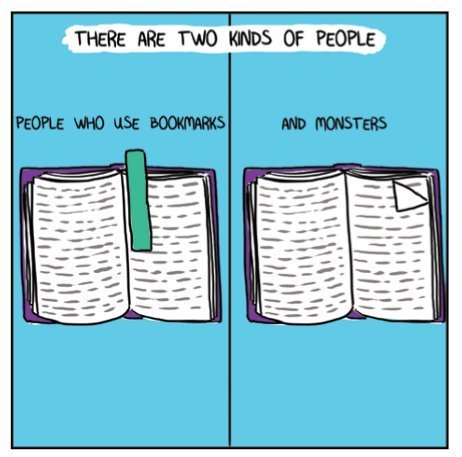Chris McMahon's Blog
October 15, 2024
When was the iron age?
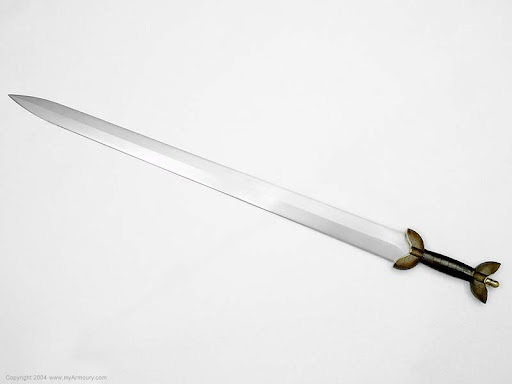
My new novel Tower of the Mountain King: The Wildness is set in a world based on a very early Iron Age Ireland. In the book, I use the traditional Irish name for the country: Eire.
It is an alternative world, where the priests of the Celtic tribes — the druids — use magic and practice divination. Spirits still linger in the ancient landscape, and the magical sidhe race dwell in deep forest enclaves; blessed with long life, cursed to always tell the truth, and linked to the magic of the land. The time period for the book is around 500 BCE – which is very early Iron Age in Ireland.
So when was the Iron Age? The dates vary, depending on the reference source, often quoted at anywhere between 1200 BCE and 600 BCE. Why the range of time periods? Because the Iron Age started at different times in different locations.
Technological changes in modern society can happen rapidly, where everything changes in a single generation, but they can also happen slowly, or “layer”, where the old technology survives in particular niches.
New technology can also be rare, and expensive, when it first appears.
It’s easy to forget that changes spread very slowly across society in prior time periods.
The Iron Age was thought to have started in the great early civilisations of the Near East, then soon after around the Mediterranean. The Greeks had iron and steel from around 1200 BCE, whereas the tribes in the area of modern Italy started working with iron perhaps three centuries later around 900 BCE (Rome founded in 753 BCE). In central Europe, which was at that time was filled with a whole series of independent Celtic tribes, the technology moved slowly west across the continent, only reaching the very western edge of Ireland somewhere around 500-600 BCE.
But just because the new iron technology arrived, it did not mean people stopped using the old one. Bronze blades and implements were used well into the common era.
The Trojan War — if it was indeed a single historical event — might have been fought between 1194 – 1184 BCE (dates give by the Greek Eratosthenes, once chief librarian at the Library of Alexandria), or even earlier. Iron technology might have been making its first appearance, but these guys would have been using bronze blades.
Bronze is one case of a layered technology that persisted for hundreds of years. Bronze swords were used across Europe from 1600 BCE to 600 CE. Generally shorter and less durable, they were prone to bending and losing their edge, but they were obviously a reasonable alternative.
In my world of ancient Eire, iron blades are prized, and used by the elite warriors and nobles, while the common clansmen, if called to war, were more likely to be equipped with spears with bronze blades and wooden shields, or with the typical short bronze swords or knives.
Whereas for armour, even my noble warriors are more likely to have the traditional bronze armour used, and passed on to them, by their ancestors, than the fancy new iron versions. Metal of any sort was prized, and expensive, for these rurally based tribes. The workers of metal — both bronze and iron — were privileged craftsmen, with a status equivalent to that of members of the noble, land-holding class.
So, keen for some good old-fashioned fantasy action?
Check out Tower of the Mountain King: The Wildness, first book in the Ennistur Tales!
The western clans of Eire are under threat of conquest from vast northern armies and the dark immortal Golsheth. Rejected from druid training, Prince Lathel is left with a hole in his mind, and his magical talent crippled. Cursed with the blood of magical sidhe race, he must embrace this unique legacy, journey into the heart of the Sidhe Realm, and claim the only power that can save the West.
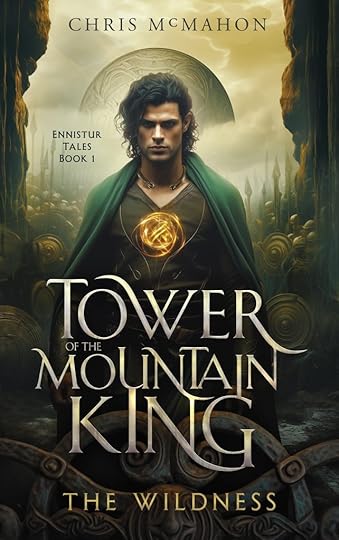
The post When was the iron age? appeared first on Chris McMahon.
February 19, 2021
Add one mind-controlling alien . . .
Every epic tale needs its villain. My new Fantasy book Warriors of the Blessed Realms is written against a backdrop of multiple worlds, and follows the adventures of heroes like Finn, from the Blessed Realms, and Liam, from Brisbane in Australia, as they fight the dark forces of the Vault of Seven Horns. They seek to defeat the plans of a cruel overlord, and rescue a captured priestess from a dark ritual that will give their enemy a vast increase in power. So who is the villain? Add one mind-controlling alien . . . the krell lord VoYannan!
So who are the krell? They are a solitary species that propagate without sexual union. Somewhere in their evolutionary history they took a dark, inward turn. In order to reproduce a krell must implant a krell-spawn into a host. The spawn grows in the host as a parasite until it rips its way free as a fully conscious krell. Nice eh? Heh – they are the bad guys! Each new krell possesses all the memories and talents of their progenitor, but their power as newborn krell depends on the choice of host. This is the fate of the captured priestess Sephany — unless our heroes can reach VoYannan’s ruined world and rescue Sephany from the depths of VoYannan’s dark citadel.
So why would a krell — who are always jealous of their power and control — loose a generation of krell-spawn on the universe? Because the sire and the newly born krell are mentally linked. The newly emerging krell can be leashed to their parent, and enhance the parent’s power. Yet there is a trade-off. As the new krell grows in strength, they can in turn consume and destroy their parent, as VoYannan did to his own progeninitor.
Krell don’t socialise well. In fact, they pretty much want to kill and dominate each other. Yet new krell keep coming.
The krell have awesome mind-control powers. Lord VoYannan, the ruler of the Vault of Seven Horns, controls fifty-eight planets, and dominates millions of sentient beings through direct mental control. He draws power from each, and enhances his power with each new mind brought under his control.
The Vaults themselves are dystopian SF worlds. Oppressed millions are kept in check by legions of laser-wielding brutes called Siithe, a savage race that consumes their victims (and even each other if they get the chance). Here are leaden skies, vast ruined cities, and factories manned by slaves from dozens of conquered species.
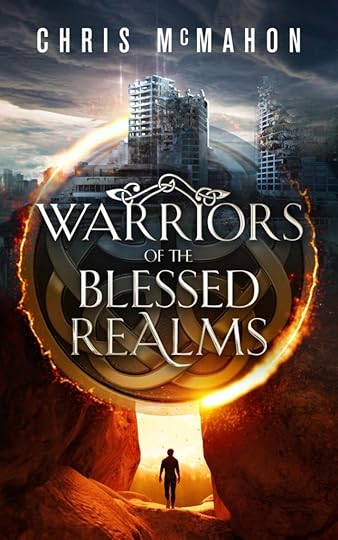
So, about the story . . .
Warriors is an epic tale spanning multiple worlds and multiple genres — fantasy, urban fantasy, and SF — where magic and high-technology go head-to-head.
VoYannan plots to unleash a devastating assault on the Blessed Realms, a coalition of six worlds with benign technology that is dedicated to preserving life. He uses an ancient Gateway on Earth to strike. His Vault forces capture the priestess Sephany, crucial to his plans, and escape.
Realm warrior Finn Evenstone sets off in pursuit, but cannot pass the Gateway used by the Vault.
Liam Durrow, sole survivor of an ancient Earth lineage, is led to Fraser Island by a vision, and uses his unique magical abilities as Keeper to open the Gateway.
Both Finn and Liam are soon battling the Vault on Earth, and in the Shadow Worlds, planets already ruined by the krell. They need all the help they can get. They are joined by tenacious Federal Agent Yolinda Paris, who has her own score to settle.
Check it out! Grab a copy of the book! Available at selected bookstores and these online retailers!
Barnes & Noble – Print and Nook
The post Add one mind-controlling alien . . . appeared first on Chris McMahon.
November 20, 2020
What is a Realm?
My new novel, Warriors of the Blessed Realms is out into the world, but what is a Realm?
In the exact sense, a “realm” is a community or territory over which a sovereign, such as a king, rules. Or an area or sphere of certain knowledge or activity.
In the case of Warriors, a Realm is a world. A planet.
And there are many worlds in this epic tale. One of them is Earth itself, where the story starts with central character Liam Durrow.
The Vaults of Sheol are fifty-eight planets ruled by a ruthless mind-controlling alien warlord, VoYannan, one of a solitary species called a krell that can dominate millions, growing in strength with each new mind that falls under their sway.
The Vaults are dystopian SF worlds. The enslaved populations are kept in check by legions of laser-wielding brutes called Siithe. Here desperation breeds under leaden, cloud-filled skies, which lower over vast ruined cities, while factories manned by slaves from a dozen conquered species churn out weapons of destruction.
Standing against VoYannan is The Blessed Realms, a coalition of six worlds with benign technology that is dedicated to preserving life, with magic that can stop Vault technology in its tracks. The Realms have fought VoYannan for thousands of years, containing him with steel and magic.

VoYannan plots to unleash a devastating assault on the Blessed Realms. He uses an ancient Gateway on Earth to strike. His Vault forces capture the priestess Sephany, crucial to his plans, and escape.
Realm warrior Finn Evenstone sets off in pursuit, but cannot pass the Gateway used by the Vault.
Liam Durrow, sole survivor of an ancient Earth lineage, is led to Fraser Island by a vision, and uses his unique magical abilities as Keeper to open the Gateway.
Both Finn and Liam are soon battling the Vault on Earth, and in the Shadow Worlds, planets already ruined by the krell. They need all the help they can get. They are joined by tenacious Federal Agent Yolinda Paris, who has her own score to settle.
That that’s Warriors! An epic tale spanning multiple worlds and multiple genres — fantasy, urban fantasy, and SF — where magic and high-technology go head-to-head!
Check it out! Grab a copy of the book! Available at selected bookstores and these online retailers!
Barnes & Noble – Print and Nook
The post What is a Realm? appeared first on Chris McMahon.
October 9, 2020
Warriors of the Blessed Realms is here!
Warriors’ is an epic tale, spanning multiple worlds and multiple genres — fantasy, urban fantasy, and SF.
The thing I love about Warriors, and which makes it a unique read, is having magic and technology going up against each other. I can’t say too much without ruining the surprise, but it was a lot of fun to write! There is what “appears” to be a fantasy world — the Blessed Realms — that can stop an advanced space-faring civilization of bad guys — the Vaults of Sheol — dead in their track. Throw in a mind-controlling immortal alien warlord . . . and that’s just the start!
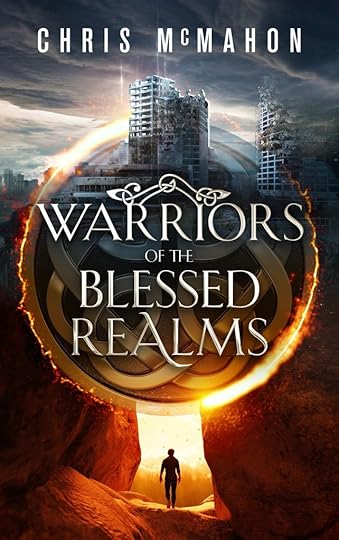
At its heart its heroic fantasy. Probably because I can’t help myself. My all time favourite author was British heroic fantasy writer David Gemmell. I will never be able to write like Gemmell, but all my writing is in part a tribute to his work & Warriors probably more than most.
The story in Warriors’ starts just before the turn of the last millennium — in the days leading up to 31st December 1999.
Does anyone remember all the fuss about the Y2K bug? We were all going to end up back in the Stone Age after all the computers that controlled the banks, the power, and the nuclear arsenals all went berserk! Thankfully, that didn’t happen. But the conspiracy theorists were in high gear, that’s for sure.
One of the challenges of writing a complex story that extends across so many worlds is where to begin! The story starts in Brisbane, Australia, with Liam Durrow, who goes on to play a pivotal role in events.
Warriors’ opens with a teaser article from a Sydney newspaper, which sets the scene for what has been happening there.
Sydney Morning Mail, 12th December 1999
“Unexplained Homeless Deaths Continue.” By reporter Danny Critchfield
Another homeless man was found dead in Sydney’s western suburbs yesterday, the seventh in less than a month. Police continue to be baffled by the deaths, so far ruling out initial theories of homicide or a new killer drug. The body of Johnny “Longjohn” Walker was discovered at 7:34 am yesterday by resident Majorie Thomas. “I thought it was a prank at first. You know, a dummy dressed up in old clothes. His face was so . . . blank. Empty. But when I got closer . . . oh! The smell! It was like he had been dead a week, not a few hours,” said Mrs Thomas.
Anger is building in the local community, already frustrated by the homeless problem. “We are sick and tired of this. I’m trying to raise children in this street,” said another resident yesterday, who did not want to be identified. “This is the second overdose in this area in a week.”
Investigating officer Detective Sergeant Peter Holmes said yesterday. “As yet we have been unable to establish any cause of death, but we have ruled out overdose.” State Health authorities continue to play down fears of a new, undetectable virus, but this has not stopped the rumours amongst Sydney’s homeless community of the “Black Breath”. Locals have begun wearing face masks.
The deaths have fuelled the local urban legend of Black Jack. “He’s always looking,” said one homeless man, only identified as “Pete” who was at the scene yesterday. “It’s the End Times. End of the millennium. Jack’s wanting the one that can open the door to the hot place [Hell] to let all the devils out. Midnight on December 31st. That’s when it’ll be. He’s the one what’s killin’ them others.”
Detective Sergeant Holmes denies any link to a killer. “We have no evidence of homicide, or of any other individual linking these deaths,” he said.
Police investigations continue
Check out what happens next! Grab a copy of the book! Available at selected bookstores and these online retailers!
The post Warriors of the Blessed Realms is here! appeared first on Chris McMahon.
June 30, 2020
Warriors of the Blessed Realms Launches September 4 2020
The launch of Warriors of the Blessed Realms is finally here!
The online launch of the Warriors’ ebook will be on Facebook on Friday September 4 2020. Click on this link to join the online event!
There will be games and heaps of giveaways. I have prize packs of signed Jakirian Cycle books, and copies of the latest Lanedd Press edition of my SF book The Tau Ceti Diversion to give away, as well as rare editions of other collections with my stories inside to gift as prizes. The last Facebook launch, for the Lanedd Press edition of The Tau Ceti Diversion, was a great event, and I’m looking forward to sending Warriors’ off into the world in style.
Warriors’ is an epic tale, spanning multiple worlds and multiple genres — fantasy, urban fantasy, and SF. At its heart it is Heroic Fantasy, for which the works of David Gemmell gave me a life-long love.
The novel has both traditional fantasy settings as well as urban fantasy based in Brisbane and Sydney in Australia, as well as strong elements of both SF and horror. That’s quite a landscape, and a lot to balance, but readers can expected one Hell of a ride!
And the story . . .
The immortal krell lord VoYannan rules one of the Vault empires, dominating millions with the mind-powers of the solitary krell, drinking the souls of his thralls to fuel his talent. A prophecy foretells that he will leash the power of his Spawn if he can implant it in one special priestess — Sephany — and ensure it feeds on her broken spirit.
In the Blessed Realms,
Finn Evenstone, last surviving son of a once elite clan, waits for the attack.
The talented Realm noble knows that the Vault will emerge through the Stonelake
Gateway.
In Brisbane, Australia, Liam Durrow struggles to come to terms with strange visions. When his uncle and guardian dies in an accident, he learns he is the sole survivor of an ancient lineage. As Keeper he inherits unique magical abilities.
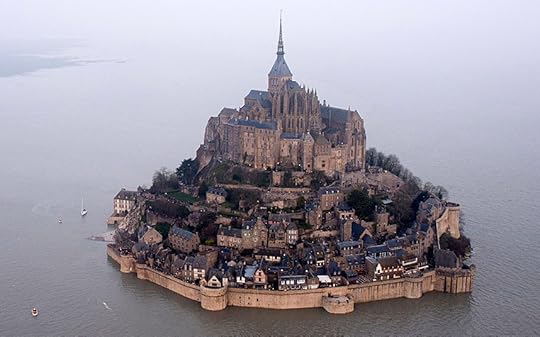
Using Earth as a
stepping-stone, the forces of the Vault strike the Stonelake Temple and capture
Sephany. A fierce battle ensues, but they escape with the priestess through the
Gateway.
From Earth, Liam opens the Gateway for Finn, allowing him to continue the pursuit. They are joined by Federal Agent Yolinda Paris, who has her own score to settle with the Vault.
Their journey leads them through the Blessed Realms and other darker worlds ruined by the krell, until it reaches its climax in the court of krell lord VoYannan.
Want to read the story? Don’t forget to join the online event!
The post Warriors of the Blessed Realms Launches September 4 2020 appeared first on Chris McMahon.
March 24, 2020
New Perseverance Rover To Land On Mars in 2021
For a long time the Mars 2020 mission was just that — an unnamed mission to deliver a funky new rover to Mars that had been scheduled for liftoff this year. This is no longer a unnamed mission, with the new perseverance rover to land on Mars in 2021. Its launch is currently scheduled for a window from Jul 17 through to August 5. Its target is Mars’ Jezero Crater, and Perseverance is expected to touch down some time around February 18 2021.
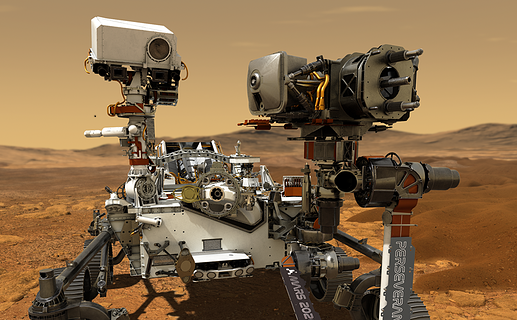 Source: NASA
Source: NASAThe new rover’s mission is to look for signs of
past microbial life and to study Mars’ climate and geology. Life. The search
for something like us outside our own planet. This drives so much of our space
exploration.
The new rover is the size of domestic sedan, weighing
in around 1 metric tonne. Its design shows the ambitions for NASA’s whole Mars
program, with Perseverance, managed by JPL, setup with a sophisticated drill,
sampling arm, and sample storage setup that will tuck away soil samples for
future return to Earth. Just think about that for a second. That is a game
changer. The first planned two-way physical movement between our planetary
birthplace and the Red Planet. This is only one part of a wider program, with a
Lunar mission in 2024 and plans to maintain a continued human presence on the
Moon from around 2028.
When we do eventually get our intrepid explorers to
Mars, we will need to know the best place to land and set up a base of
operations. One of the keys to this will be knowing where to get water — or in
the case of conditions on Mars — water ice.
Recent research has indicated that water ice may be as little as 2.5 cm below the surface. All Martian astronauts should be issued with a portable spade!
There is a good reason water ice is under the surface. In the thin Martian atmosphere, even water ice located directly on the surface would evaporate, sublimating directly from solid to vapour.
One of the key considerations for success of any mission to Mars will be the strategic allocation of a wide range of resources. We will need to know exactly what we need to take with us, and exactly what we should expect to harvest from Mars’ surface and atmosphere. This includes not only water, but chemicals that could be used to make rocket fuels (check out Juggling Molecules on Mars, my prior post on Robert Zubrin’s Mars Direct concept).
One of the ways we can make this assessment of resources from Earth is by using orbiting satellites already in place around Mars. Two of these, which are proving invaluable, are NASA’s Mars Reconnaissance Orbiter (MRO) and the Mars Odyssey orbiter. Both of these have been used to locate Martian water ice potentially accessible to astronauts. Learning how to detect the presence of this water ice has meant piecing together data from multiple sources so that the temperature of the soil could be used as an indicator of the presence and depth of water. The calibration of the temperature-water relationship was achieved by synthesizing data from physical excavation near the poles by the Phoenix lander and data from studies of impact craters by MRO, where the ice has been exposed by asteroid impacts. The Thermal Emission Imaging System (THEMIS) camera on Mars Odyssey, and its Gamma Ray Spectrometer — designed for water detection — have all been crucial.
So where is the accessible water? At the poles and mid-latitudes.
Any landing will likely be in the northern hemisphere though, since the lower elevation means more atmosphere to cushion any landing. Perhaps in sites such as Arcadia Planitia, which shows promising ice deposits close to the surface.
These are preludes to human exploration of one our nearest solar system neighbours. One of our familiar, well-behaved, and unoccupied planets.
What happens when we reach our first exoplanet? What about one that is tidally locked to its star?
Check out what happens in my SF novel The Tau Ceti Diversion when they touch down to explore the first exoplanet.
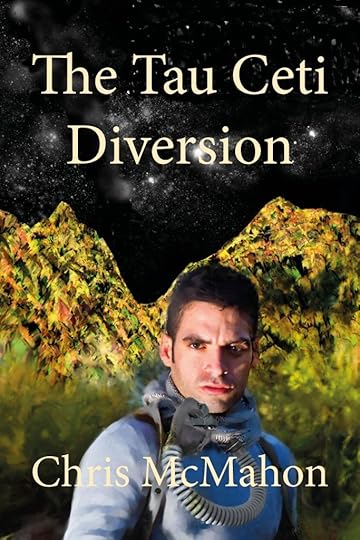
With the crew dead, and the starship’s fusion drive held back from a lethal
explosion, Karic and the surviving officers reach a habitable planet – the last
thing they expected was to find it already occupied . . .
The post New Perseverance Rover To Land On Mars in 2021 appeared first on Chris McMahon.
February 26, 2020
First Earth-Sized Planet in Habitable Zone
The last few decades have been an exciting time for the exploration of other solar systems. So many exoplanets have been found, with the total going from literally zero to thousands. First with Kepler, then Spitzer, and now TESS — the Transiting Exoplanet Survey Satellite — which can detect minute fluctuations in the light emitted by target stars as their planets transit in front of their suns. This has been described as analogous to analysing the light from a lit-up skyscraper at night and being able to detect someone shifting down their office blind by one centimetre! More on TESS here.
All the planets of interest identified by the TESS
will be classified with the TOI prefix ( Transiting
Exoplanet Survey Satellite Object of
Interest).
TESS has already had its first find. An Earth-sized planet in the habitable zone of the star designated TOI 700, which is 100 lightyears away. Cosmic spitting distance! For the astronomically minded, this star is in the constellation of Dorado. It’s so exciting to imagine these stars as fostering a solar system favourable to life. TOI 700 is a cool M dwarf star, also known as a red dwarf star, the coolest in the cosmic stellar sequence, the most common, and the longest-lived stars. This red dwarf has 50% of our Sun’s surface temperature, and 40% of its radius — like a cool little sister.
 TOI700 d First Earth-Sized Planet in a Habitable Zone
TOI700 d First Earth-Sized Planet in a Habitable ZoneThe planet that all the excitement is about is TOI 700 d, which is the outermost of three identified planets in that system. It is estimated to be around 20% larger than Earth, with an orbital period of 37 days, receiving perhaps 86% of the energy that our Sun provides to Earth. All three planets in this system are thought to be tidally locked to their star. This means they rotate once per orbit, with one face always toward its sun and the other permanently facing away — day and night sides — much like how the Moon is tidally locked to Earth.
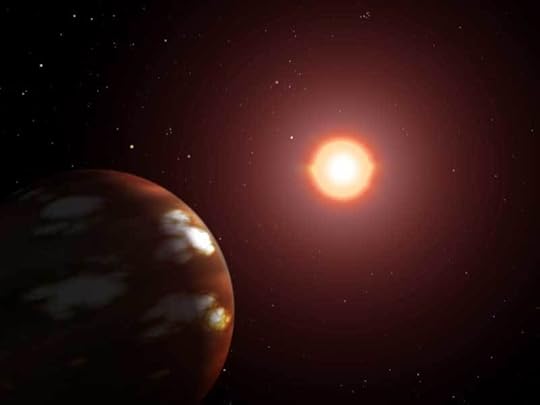
Based on our solar system, we are used to the idea
of rocky planets existing closer to the sun, with gas giants appearing further
out. In TOI 700 the closest planet to the sun (TOI 700 b) is Earth-sized and
rocky, the second (TOI 700 c) is likely have a composition similar to Neptune,
while the goldilocks third planet (TOI 700 d) is Earth-sized and rocky!
What makes TOI 700 d unique is that it’s the first
Earth-sized exoplanet located in the habitable zone. Astronomers have found
thousands of Jupiter-sized planets, many of them “hot Jupiters” that orbit very
close to their star, and other rocky planets, some of which are Earth-sized,
but all of which lay outside the zone where liquid water might exist on their
surface.
The only hitch for TOI 700 d is that despite
receiving less solar energy, it is thought to be receiving up to 35 times more
extreme UV radiation, which is not so great news for developing life. Regardless,
TOI 700 d is a solid candidate for a habitable world, and one in our close
stellar neighbourhood.
Future work will be targeted at characterisation of
the planets’ atmospheres, and if possible, their actual compositions. Given the
fact that they are likely to be tidally locked, the 3D climate modellers are
going to have their work cut out for them!
The likelihood that the three planets in this
system might be tidally locked has really tickled my SF brain, since one of the
major premises of my SF book The Tau Ceti Diversion, was that the target planet
(where all the action takes place) is tidally locked to its sun.
The Tau Ceti Diversion . . . with the crew dead, and the starship’s fusion drive held back from a lethal explosion, Karic and the surviving officers finally reach a habitable planet. The last thing they expected was to find it already occupied . . .
Get The Tau Ceti Diversion here!
The post First Earth-Sized Planet in Habitable Zone appeared first on Chris McMahon.
November 4, 2019
The twin Earth almost had
It’s hard to imagine Mars as a wet place, but that’s exactly what the data and images coming in from the Curiosity rover in Gale Crater are telling us. In fact, Mars is the twin Earth almost had.
Wet Mars.
3.5 billion years ago Gale Crater was filled with ponds of water, with streams cascading down the ancient basin’s walls, down to its wet centre. Eventually these watercourses dried up, but then perhaps the whole cycle repeated numerous times. Of course the water did eventually go for good.
Why?
Unlike Earth, which has a powerful magnetic field protecting its atmosphere, Mars has no such advantage. The solar wind — all those energised particles — just ram straight into it, knocking molecules right out of its atmosphere into space. Which molecules go first? The lightest ones. The hydrogen, the water, the oxygen. What is left is the heavier molecules like carbon dioxide, purely by virtue of the balance between gravitational attraction and the applied force of that solar wind. But that’s planet formation!
How do scientists conclude that there may have been these super wet and dry periods from the geology? By evidence left in the rocks, specifically high concentrations of mineral salts, deposited during periods of evaporation. This is not the first time Curiosity has found evidence of water here. The rover has also unearthed evidence of freshwater lakes.
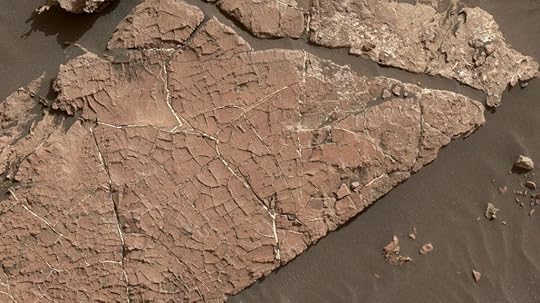 Gale Crater: Source NASA JPL
Gale Crater: Source NASA JPLThe Gale crater itself started life with a bang, and is thought to have been formed by one massive impact. Sediment on the floor of the crater was built in layer upon layer of alluvial deposits, drying into a substantial formation over time. This layered rock was later wind-eroded to form the current Mount Sharp, which Curiosity is busily climbing.
So, we know there was water there, and likely there for long periods of time. The 64 million dollar question is, was this wet environment capable of supporting microbial life at the surface, and if so, for how long? How long were evolution’s engines allowed to turn, working to transform that life? And is that life still present?
If not for the weak magnetic field of Mars, we could have had a celestial twin. A planet in our own solar system with water-based life. Now that is something to think about!
Studies like this are invaluable in understanding our own home. As a SF writer, they provide invaluable insights when it comes to building your own planets! Check out my own world-building in The Tau Ceti Diversion.
With the crew dead, and the starship’s fusion drive held back from a lethal
explosion, Karic and the surviving officers reach a habitable planet – the last
thing they expected was to find it already occupied . . .
Get it now on Amazon!

The post The twin Earth almost had appeared first on Chris McMahon.
November 3, 2019
The Real Monsters . . .
November 1, 2019
Alien Contact Amid Lethal Disaster
Deadly radiation kills the crew and cripples the ship.
And then they reach the planet . . .
Check it out on Amazon.

Read more here. @ChrisMcMahon111
The post Alien Contact Amid Lethal Disaster appeared first on Chris McMahon.

